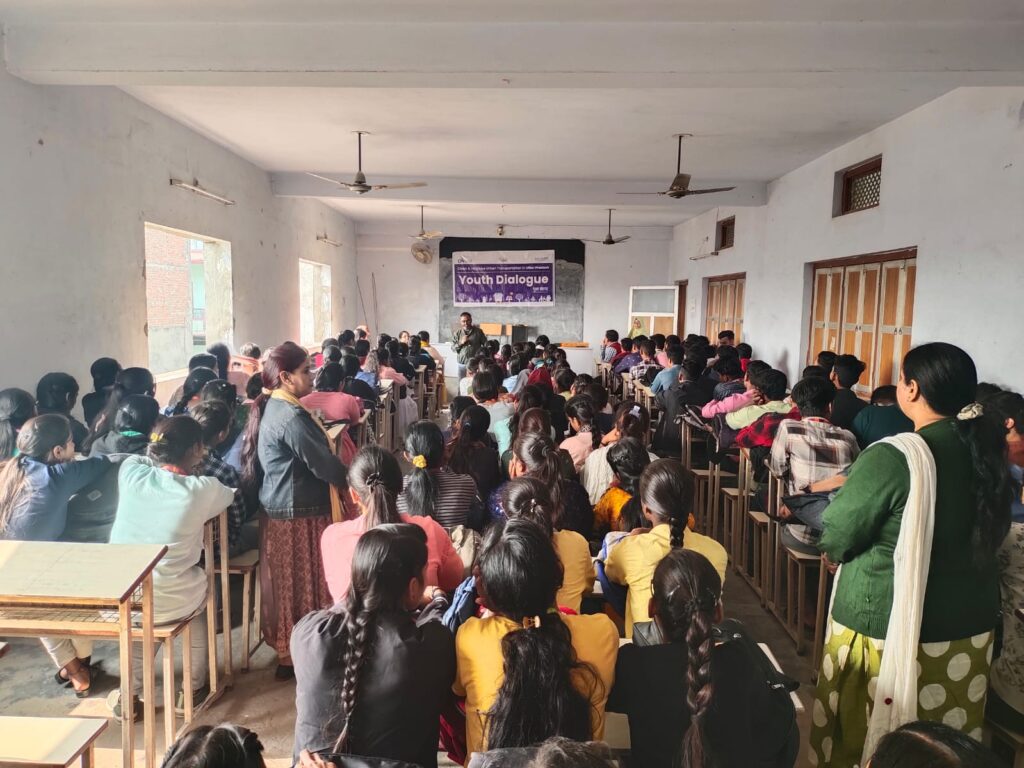Youth Dialogue on Urban Mobility at Shri Ram PG College, Varanasi
The important questions about how mobility solutions should be developed and the role of stakeholders in this process. One student asked, “What approach should be taken to find sustainable mobility solutions, and how can we ensure that current stakeholders are not negatively impacted byAt Shri Ram PG College, Varanasi, the recent Youth Dialogue on Urban Mobility saw active participation from young women, who made valuable contributions throughout the discussion. This event, attended by several faculty members as well, marked the beginning of an important conversation on why urban mobility solutions are essential and how they affect the daily lives of students and the broader community.
The dialogue began with a thought-provoking question: Why is urban mobility so important, and why should youth engage in discussions about it? The conversation focused on the fact that, for college-going students and the general youth population, understanding the role of efficient mobility solutions can lead to better opportunities, including economic independence and greater social inclusion.
Key Highlights of the Dialogue:
The Need for Sustainable and Inclusive Mobility Solutions
A major theme of the discussion revolved around how mobility solutions should be sustainable and inclusive. As cities grow and evolve, especially in emerging economies like India, the way we approach transportation plays a pivotal role in shaping the future. Across major cities worldwide, urban mobility solutions are designed based on local evidence and data to cater to specific regional needs. In the same way, India’s urban centers should develop solutions that address both environmental concerns and social inclusivity.
It was emphasized that if mobility solutions are not inclusive, a significant portion of the population—especially women—remains excluded from accessing the benefits of these systems. For example, women’s mobility needs often differ from men’s, particularly when it comes to safety, accessibility, and affordability. This highlights the need to design urban mobility systems that cater to both men and women, ensuring that no group is left behind.
Youth Engagement in Shaping the Future of Urban Mobility
During the dialogue, several students, particularly EV enthusiasts, raise the transition?”
This question sparked an important discussion about the need for collaboration among various stakeholders, including government authorities, private sector companies, local communities, and academic institutions. It was clear that in order to create effective and sustainable urban mobility systems, all voices need to be heard, and evidence-based approaches should drive decision-making.
Economic and Social Impacts of Urban Mobility
The dialogue also addressed the economic benefits of better mobility solutions. Efficient and inclusive transport systems can significantly improve access to education, employment, and healthcare, especially for those living in remote or underserved areas. With better transportation options, students can commute more easily to college, professionals can reach workplaces faster, and individuals can access opportunities that were previously out of reach.
Moreover, an efficient public transport system or widespread electric vehicle (EV) adoption can help reduce traffic congestion, improve air quality, and create green jobs, leading to a more economically sustainable city.
Inclusive Solutions for a Diverse Population
The conversation also delved into how mobility solutions can be designed to be inclusive, not just for men, but for women and other vulnerable groups. The need for safe, affordable, and accessible transportation options for women was a key point of discussion. In many cities, public transport systems and infrastructure are designed with a male-centric view, which does not always meet the needs of women or children. Creating systems that account for safety (such as well-lit bus stops, dedicated spaces for women), flexibility (e.g., multiple transit options), and affordability is critical for encouraging equal participation in economic and social life.
The Role of Youth in Shaping Future Mobility
One of the most inspiring aspects of the dialogue was the active engagement of the youth, who not only listened to expert insights but also asked thought-provoking questions. By addressing how mobility solutions can be developed without creating negative impacts on the existing systems or stakeholders, the youth demonstrated their understanding of the complexities involved in transitioning to more sustainable models.
We also discussed electric vehicles (EVs) as a potential solution to reduce the carbon footprint of the transport sector. With growing concerns about climate change, young people are increasingly interested in green mobility options, and their questions reflect a desire to contribute to building cleaner, more efficient transportation systems for future generations.




